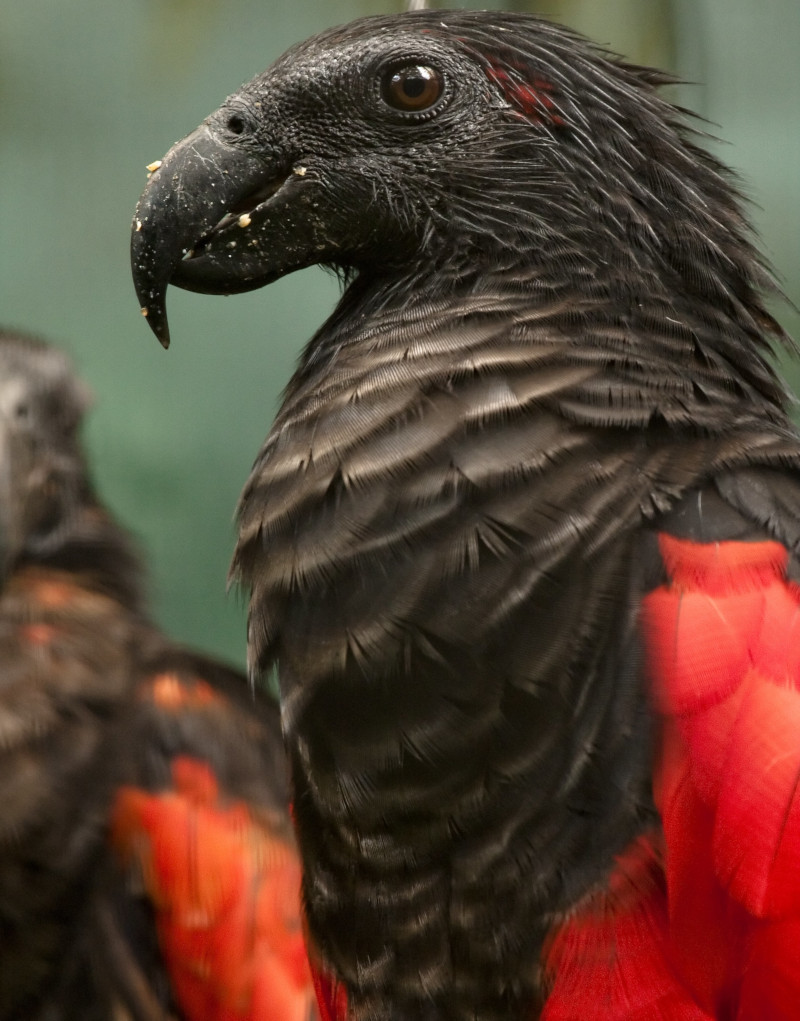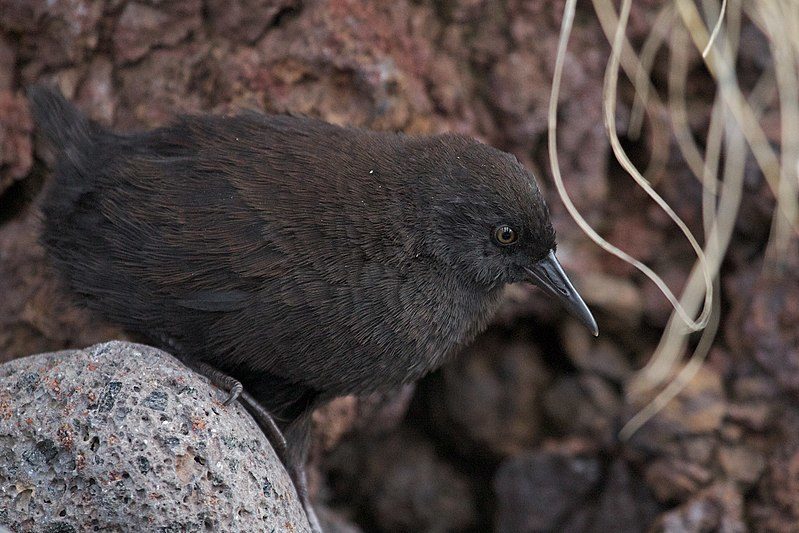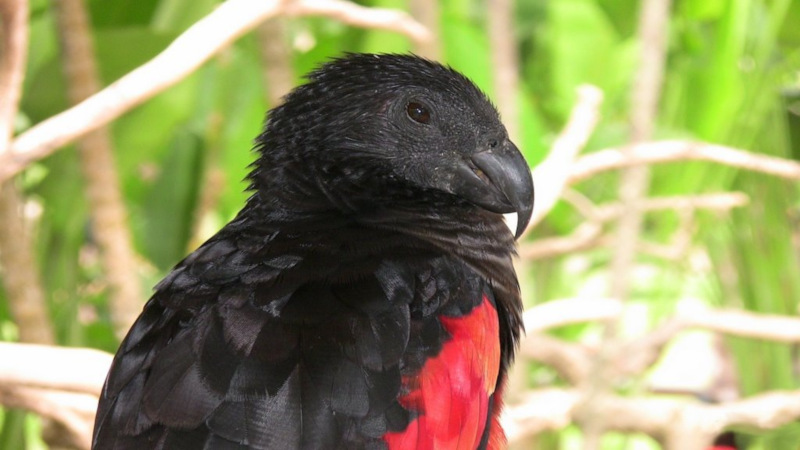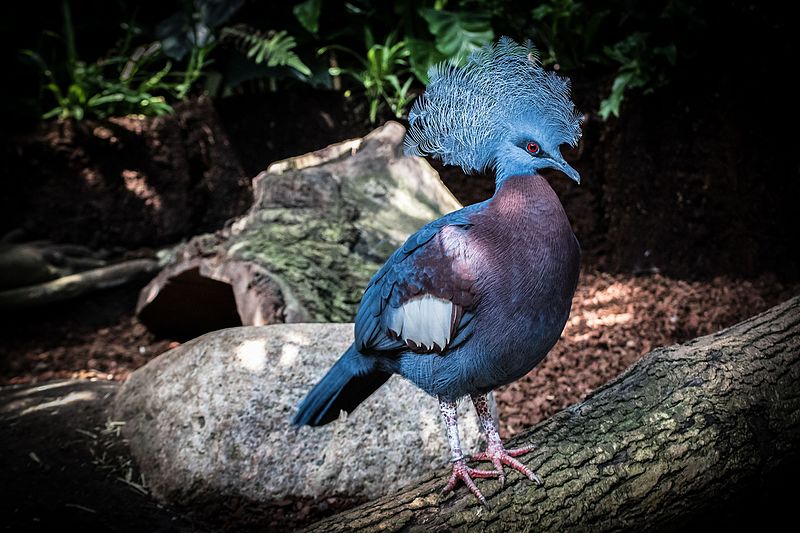
Pesquet’s Parrot Facts
- It’s immediately obvious to the astute observer that the amazing Pesquet’s Parrot represents an extremely unique variety of parrot. That physical uniqueness, however, actually extends to much further areas than just its sheer physical appearance.
- The incredible bird actually represents the sole occupant of both an entirely separate genus and subfamily, within the Family Psittrichasiidae. This different type of parrot also remains renowned among related species for its truly distinctive sounds.
- Its common call strikes most individuals who hear it as quite rasping in nature. But, it also has the tendency to frequently emit a long, drawn out scream while in flight. As a result, it also goes by the alternate common name of the vulturine parrot.
- This remarkable avian now finds itself in extreme danger, however, due to a combination of several factors. For the moment, its population appears to be decreasing in direct proportion to the rate of ongoing habitat loss, not surprisingly.
- Since the remarkable Pesquet’s Parrot had a limited range to begin with, it remains especially vulnerable. The ever-increasing effect of climate change also poses a severe threat to the bird. For these reasons, the IUCN currently lists it as Vulnerable.
Related Articles



Hoatzin

Pesquet’s Parrot Physical Description
Perhaps most notably, its appearance and sounds do not constitute the only distinctive characteristics of the incredible Pesquet’s Parrot. That holds true due to the fact that, in addition to its other traits, it also forms a slightly larger than average type of parrot.
The remarkable bird also displays a mild degree of sexual dimorphism, much like many related species. In its particular case, however, the impressive animal does so with a very small, and quite easily overlooked difference in visual appearance.
A small red spot appears behind each eye on the male, but not the female. In every other way, the two genders present identical physical appearances, including having a comparatively small head. Firstly, it attains an average overall length of about 18 in (46 cm).
Secondly, adults typically reach a weight of between 24 – 28 oz (680 – 800 gms). Its wings generally present as black, with dark gray scaling. Also, it usually has a bright red chest and abdomen. It also has a large black beak, with the combination creating a striking appearance.
- Kingdom: Animalia
- Phylum: Chordata
- Class: Aves
- Order: Psittaciformes
- Family: Psittrichasiidae
- Genus: Psitrichas
- Species: P. fulgidus

Pesquet’s Parrot Distribution, Habitat, and Ecology
Quite unfortunately, the astonishing Pesquet’s Parrot remains native to only a tiny part of the world. This range consists of only certain portions of Papua New Guinea, near Australia. It’s unknown to researchers if it ever possessed a greater range of habitation.
But, even within this already limited area, it displays clear preferences for its habitat. The avian only inhabits specific regions of the local rainforest. Here, this absolutely amazing variety of parrot appears at altitudes ranging from 328 – 5,905 ft (100 – 1,800 m).
The fascinating bird also distinguishes itself from related species in yet another manner. That holds true due to the nature of its diet. Most known varieties of parrot feed as omnivores. Surprisingly, however, this animal evolved as a highly specialized frugivore.
In point of fact, the avian feeds almost exclusively on a few types of figs native to its habitat. The precise reason for this adaptation currently eludes researchers. But, the confusing variety of parrot does occasionally consume small quantities of flowers and nectar.
The truly fascinating creature possesses even more intriguing aspects to its nature than these facts, however. The distinctive bird also evolved a strongly nomadic pattern of behavior. It does this in accordance with the availability of fruits, as the seasons change.
Researchers think that the unusual lack of feathers on the head of the Pesquet’s Parrot developed as an adaptation for a surprising reason. Nature designed this attribute to prevent complications with feathers from the juice of the fruit it consumes.
Unfortunately, experts still know very little about its mating habits in the wild. It appears to generally live in small groups of up to 20 individuals. Following mating, the female places her eggs in a large nest in a hollow tree. A typical lifespan in the wild is about 9 years.
Species Sharing Its Range



Check out our other articles on 5 Amazing Galapagos Island Species, Great Hammerhead Shark, Table Mountain, San Diego Thornmint, Jewel Wasp, African Manatee, Green Iguana









Leave a Reply